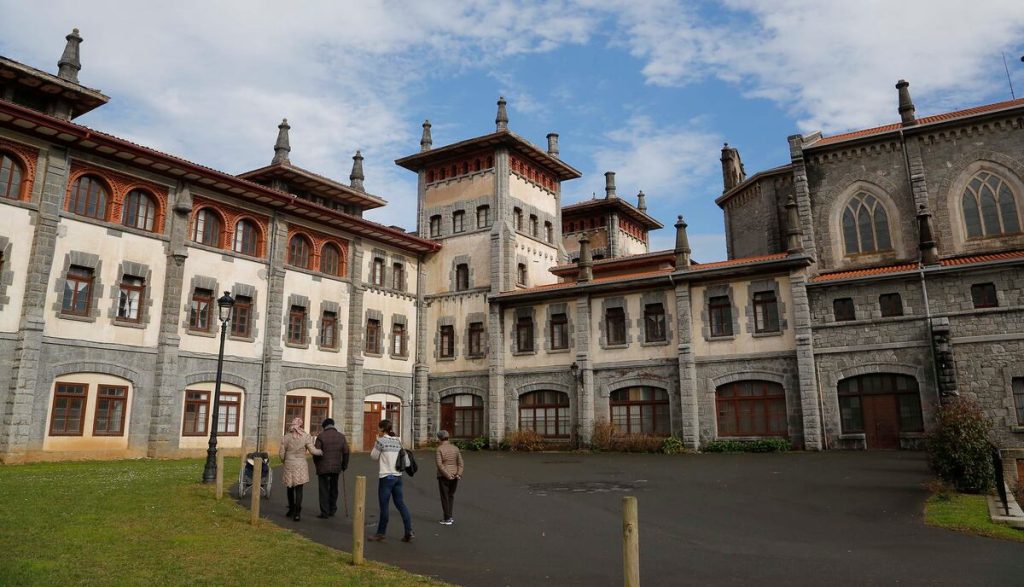Many years ago, nuns and novices of the Congregation of the Handmaids of the Sacred Heart of Jesus lived in a convent in Azpeitia, Gipuzkoa. The convent had fallen into disuse at the beginning of the century and has now been transformed into a residential complex with 48 small apartments intended primarily for young people under 36 years of age in need of housing. The lack of religious vocations gradually emptied this imposing monastic building, which was located just a few meters from the basilica of Loiola. The Handmaids order decided to close it, putting an end to almost a century of history dedicated to charity and education. In addition to being a residence for the religious sisters, this convent also functioned as a school in one of its wings for over eight decades, from 1905 to 1987.
The convent is a large T-shaped building with a central church facing a main avenue on the outskirts of Azpeitia. One of its wings has been completely emptied and transformed, after over two years of work, into a new building with 48 residential units, 31 of which have one bedroom and the remaining 17 have two bedrooms. The smaller units are 34 square meters in size and are spread across a ground floor and two floors above. Two of the one-bedroom units are reserved for people with permanent mobility impairments. The local municipality has donated a portion of the property for this project, and the Basque Government has invested six million euros in the rehabilitation of the building and construction of the residential units.
The families who will inhabit these apartments will not be allowed to stay for more than five years. During their stay, they will pay a monthly fee ranging from 150 to 350 euros for the one-bedroom units and 180 to 420 euros for the larger ones. The fee will not exceed 30% of the weighted income of each family. The Basque Government and the Azpeitia City Council officials visited the new apartments for young people on July 22. The former spiritual and educational center has retained the same aesthetic appearance as the convent façades, with eclectic style, neo-Gothic features in its prominent buttresses, Moorish influences, and elements of regional mountain style. There are no longer any signs of the monastery’s past activities.
The new residents, selected from applicants registered in the Basque Government’s public housing registry (Etxebide), will begin moving in in the coming days. To qualify for this type of public housing, they must not exceed a household size of four, not own any other property, and have annual incomes not exceeding 42,315 euros. At least one member of the household must be registered in Azpeitia or one of its neighboring municipalities. The Mayor of Azpeitia, Nagore Alkorta, views this initiative as crucial, as it repurposes an existing building familiar to residents rather than constructing new buildings. The Basque Government currently has around 900 such apartments for people under 36 years old, with ongoing construction projects to provide more affordable housing options for young people.
The aim for the current administration is to allocate 50% of all rental housing developments to individuals under 36 years old. The Basque Government’s new Minister for Housing and Urban Agenda, Denis Itxaso, highlights the importance of providing affordable housing to address the needs of young people and repurposing existing buildings for this purpose. The innovative approach of reusing buildings for housing developments has been recognized as one of the top 50 innovative solutions in Europe by Housing Europe, the European Federation of Public Housing. With similar projects underway in various regions, the conversion of old convents and other buildings into affordable housing options is on the rise, creating new opportunities for young people seeking independence and housing security.


